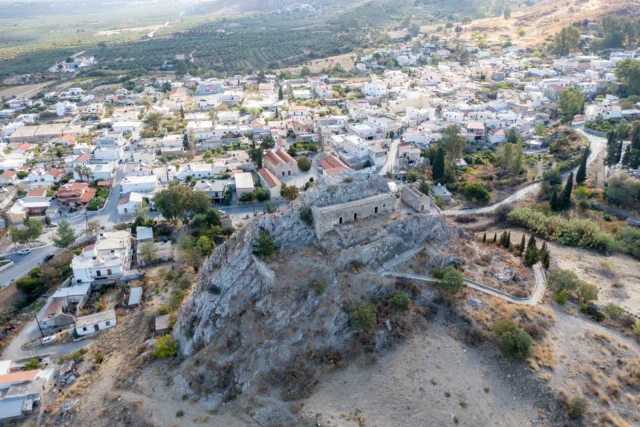The island of Crete, with its strategic location and rich history, has been a coveted prize for many empires. Among them, the Byzantine Empire held a significant sway over the island in two distinct periods. The First Byzantine period, spanning from the late antique era (3rd century AD) to the Arab conquest in the late 820s AD, witnessed an era of peace, prosperity, and cultural efflorescence. This narrative delves into the intricacies of this period, highlighting the unique aspects of Crete under Byzantine rule.
Early Byzantine Crete: A Peaceful Periphery
In contrast to the turbulent events that shaped the broader Byzantine Empire, Crete in the early Byzantine period was a haven of tranquility. The island was a peaceful provincial backwater, far removed from the political and military turmoil that often plagued the heartland of the empire.
Administrative and Political Landscape
Under Roman and subsequently Byzantine rule, Crete was initially part of the joint province of Crete and Cyrenaica. However, under the reign of Diocletian, it was established as a separate province. Constantine the Great later subordinated it to the Diocese of Moesiae, and later to the Diocese of Macedonia, within the praetorian prefecture of Illyricum. This administrative structure remained largely unchanged until the end of late antiquity.
Civic Institutions
Some traditional civic institutions, such as the Koinon of the island, persisted until the end of the fourth century AD. However, with the increasing centralization of power in the hands of imperial officials, these provincial institutions gradually diminished in influence.
A Scarcity of Sources
Historical sources provide limited information about Crete during the period between the 4th century and the Arab conquest in the 820s AD. This scarcity of sources further underscores the island’s status as a quiet backwater, largely overlooked by contemporary historians and chroniclers.
Episcopal Participation
Interestingly, Cretan bishops were absent from the First Council of Nicaea in 325 AD, unlike their counterparts from neighboring islands like Rhodes and Kos. This absence might indicate a degree of isolation or perhaps a lack of significant theological disputes on the island.
Challenges and Prosperity
Despite facing challenges such as a Vandal attack in 457 AD and a series of devastating earthquakes, Crete remained largely peaceful and prosperous. The archaeological evidence, with its numerous well-built monuments from this period, testifies to the island’s economic and cultural vitality.
Population and Demographics
In the 6th-century Synecdemus, Crete is recorded as being governed by a consularis, with Gortyn as its capital. The island boasted 22 cities, and its population is estimated to have been as high as 250,000. The population was overwhelmingly Christian, with a small Jewish community concentrated in the main urban centers.
The 7th Century: A Turning Point
The peaceful trajectory of Crete was disrupted in the 7th century AD. The island faced a series of challenges, including a Slavic raid in 623 AD, followed by Arab raids in 654 and the 670s AD, during the first wave of the early Muslim conquests. Further Arab incursions occurred in the early 8th century AD, particularly under the reign of Caliph al-Walid I.
Administrative and Military Response
In response to these threats, the Byzantine Empire appointed an archon to govern Crete. The presence of a strategos of Crete in 767 AD and a tourmarches of Crete, evidenced by a seal, has led to suggestions that the island might have been constituted as a theme in the 8th century AD. However, this evidence is not conclusive, and many scholars believe that Crete was not a fully-fledged theme at this time.
The Arab Conquest
In the late 820s AD, a group of Andalusian exiles landed on Crete and initiated its conquest. Despite repeated Byzantine expeditions to repel them, the Arabs established a stronghold in Chandax on the northern coast. Chandax became the capital of the newly established Emirate of Crete.
























